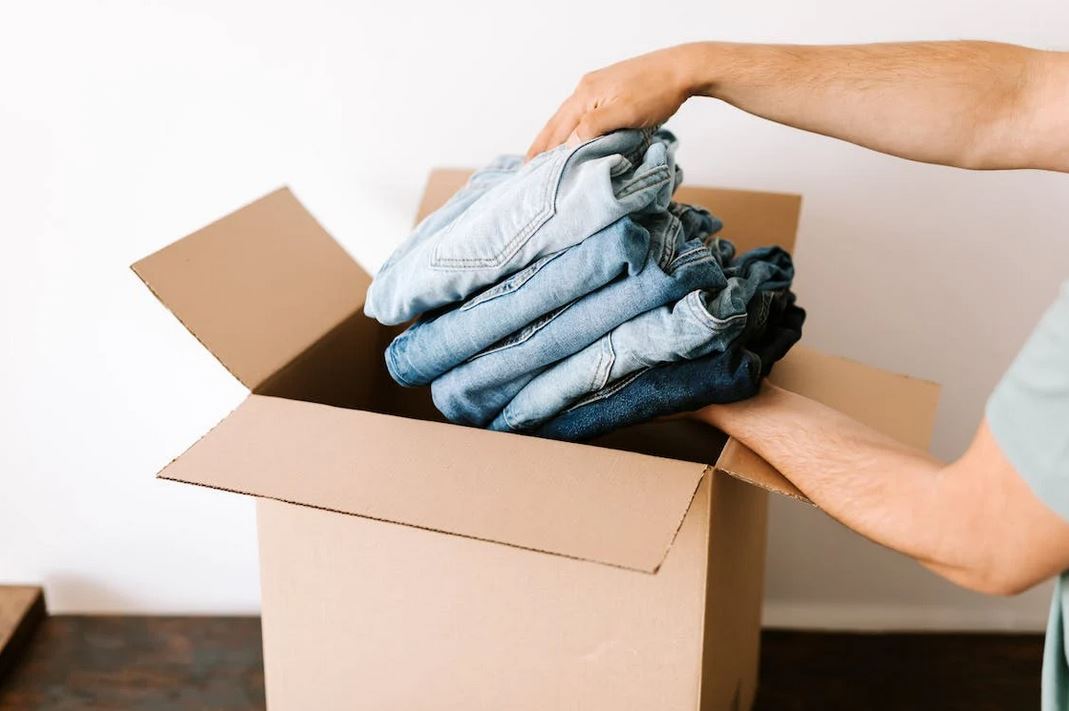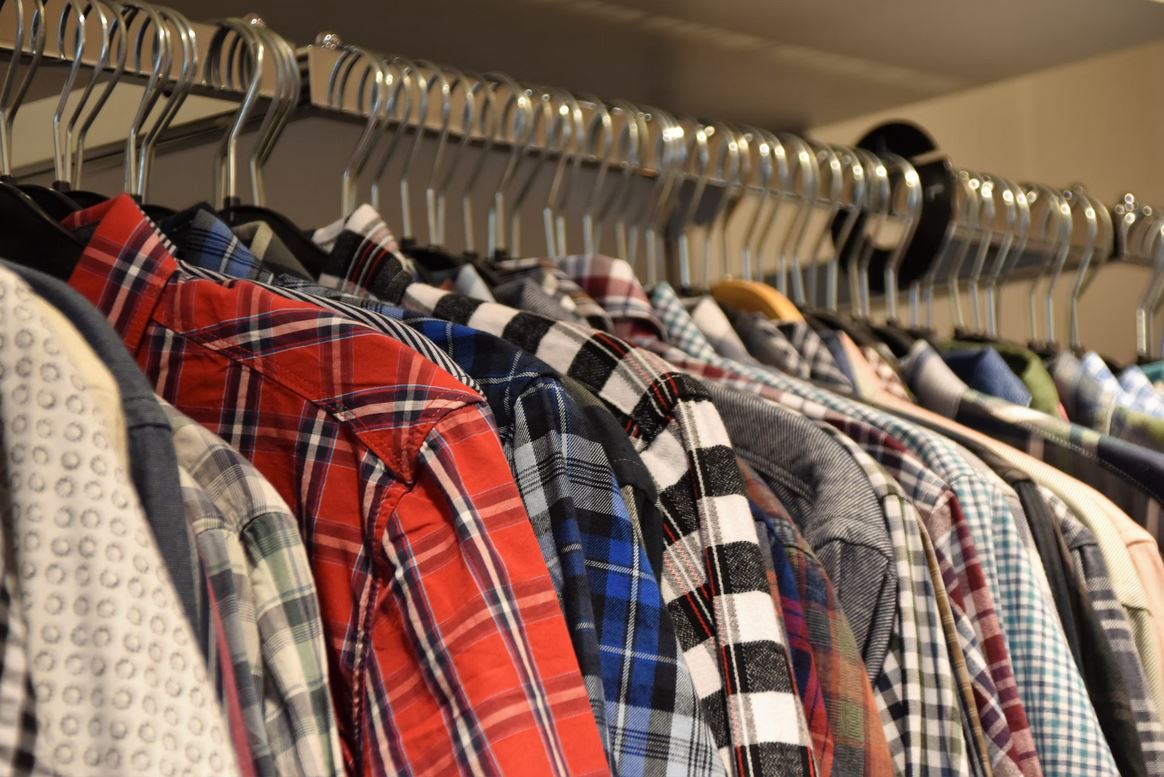How To Clean Fur Coat From Thrift Store Thoroughly: 10 Tips
Have you ever come across a beautiful vintage fur coat at a thrift store or estate sale and wanted to take it home? Maybe it was your grandmother’s retro fur that got relegated to the attic, and now needs some serious TLC.
Or you’re just looking for a more ethical and eco-friendly way to enjoy fur’s luxurious warmth. Whatever the case may be, pre-loved fur can be a smart investment with proper care. But cleaning a used fur coat comes with its own unique considerations.
This comprehensive guide will walk you through everything you need to know to deep clean and care for a secondhand fur coat. From inspecting condition, to DIY and professional methods, to proper storage and pest prevention.
Let’s delve into how to thoroughly clean and refresh that thrift store fur find!
Key Tips for Refreshing Pre-loved Fur
When it comes to cleaning and caring for secondhand furs, keep these top tips in mind:
- Choose Wisely – Be picky when selecting used fur, check carefully for damage and wear. A quality vintage find is worth the investment.
- Handle with Care – Vintage fabric and fur are delicate. Use only mild cleaning methods, and handle your thrifted treasure gently.
- DIY First – Attempt homemade cleaning solutions before taking to professionals. Going the gentle route often does the trick.
- Store Properly – Protect your prized vintage fur between wears and during off-seasons. Improper storage can lead to damage.
- Do Quick Repairs – Don’t let minor issues worsen. Repair tears, loose threads and split seams promptly to maintain condition.
With smart selection and proper care, your pre-loved fur can look fabulously retro for years to come.
1. Why Choose a Vintage Fur Coat from a Thrift Shop?
There are several excellent reasons to consider a pre-owned fur coat rather than buying brand new:
- More Affordable: Used furs are a fraction of the cost of new designer pieces. Vintage mink or fox coats can often be found for $100-500 versus $2,000 or more for new.
- Unique Retro Styles: Thrift and consignment stores offer one-of-a-kind retro and antique fur fashions from past eras. From glamorous 1950s silver fox stoles to 1970s patchwork fur coats.
- Eco-Friendly: Purchasing pre-loved fur is an ethical way to enjoy fur’s warmth and luxury. Reusing existing furs reduces waste and environmental impact.
So if you love the look and feel of fur, consider thrifting as a smart option. You can score major deals on vintage designer brands for everyday wear or special occasions. Now, let’s go over what to look for when selecting a secondhand fur.
2. What to Inspect When Selecting a Used Fur Coat
It’s important to thoroughly inspect a used fur coat before purchasing to assess its condition. Here are key things to check:
- Damage: Look for tears, holes, missing fur, bald spots, etc. Pinpoint extensive damage that would be costly to repair.
- Pests: Inspect seams, folds and interior pockets closely for signs of moths, carpet beetles, and their eggs or larvae. Even tiny holes could indicate pests.
- Wear: Assess the overall amount of wear. Is the fur intact and plush overall? Or is it rubbed down, shedding and brittle from age?
- Fit: Always try on a secondhand coat. Make sure it fits properly or could be altered affordably if needed.
- Soiling: Check if deeply ingrained dirt or stains are present that require heavy cleaning.
Taking time to carefully examine a used fur will help avoid disappointment later. Always check areas like armpits, hemlines and collar for the most wear. Now let’s go over pre-treating a fur before deep cleaning.
3. Pre-Treating a Thrifted Fur Before Deep Cleaning
Before intensively cleaning a secondhand fur coat, take some preparatory steps:
- Brush Gently: Use a soft bristle fur brush to remove any loose hairs and surface dirt. Avoid over-brushing delicate vintage fur.
- Vacuum: Use vacuum crevice tool or soft brush attachment to pick up dust and hair particles. Don’t press or rub hard.
- Inspect Lining: Check coat lining, interior pockets and seams for stains, moth holes or odors.
- Assess Cleaning Level: Determine if professional help is needed for heavy soiling, odors, or delicate vintage fabric.
Now that the coat is pre-treated, you’re ready to tackle cleaning it. Let’s explore common DIY methods first.
4. DIY Cleaning Methods for a Secondhand Store Fur
When possible, attempt DIY home methods first before taking a used fur coat to the pros. This can save you money, and allows gentle cleaning trials.
Hand Washing Technique
- Fill sink or tub with cool water and a mild detergent, soap or fur shampoo. Avoid hot water.
- Fully submerge the coat, gently swirling and soaking to loosen dirt.
- Drain dirty water, refill tub and repeat rinse cycles until water runs clear.
- Absorb moisture without twisting or wringing. Roll coat in towels.
- Lay flat on towels to fully air dry, gently brushing fur direction.
Spot Cleaning Process
For mild soiling:
- Mix gentle detergent and water in a spray bottle. Avoid saturating leather or suede trims.
- Lightly mist problem areas only, don’t overwet entire coat.
- Use a soft cloth to gently dab soiled spots. Avoid rubbing or scrubbing delicate fur.
- Let dry fully before wearing again. Repeat if needed for stubborn spots.
Steaming Method
- Use a handheld garment steamer on a delicate setting, not high heat.
- Work in sections going with the fur grain, keeping steamer head moving.
- Avoid holding in one spot to prevent damaging fur.
- Hang to fully air dry afterwards.
Professional Dry Cleaning
For heavily soiled or delicate fur:
- Take to a reputable eco-friendly fur specialist or dry cleaner.
- Specify any heavy stains or odors to be treated. Request a light cycle.
- Pick up promptly. Follow storage guidelines after professional cleaning.
If home methods aren’t cutting it, professional help may be needed. Now let’s look at some DIY cleaning solutions to try.
5. DIY Cleaning Solutions for a Pre-Owned Fur Coat
There are several natural homemade cleaning solutions to try on thrift store fur finds:
Baking Soda
- Baking soda helps remove odors and acts as a gentle fur freshener.
- Mix with just enough water to form a paste, massage into coat.
- Let sit for 1 hour before thoroughly brushing out.
White Vinegar
- Vinegar cuts through oils and helps neutralize odors in fur.
- Mix equal parts vinegar and water in a spray bottle.
- Lightly mist onto coat sections. Let sit briefly before gently wiping with clean soft cloth.
Cornstarch
- Cornstarch absorbs grease, dirt and odors easily from fur.
- Generously sprinkle cornstarch all over coat. Allow to sit for 1 hour.
- Use a soft brush to loosen debris, then vacuum up.
Baby Powder or Talcum Powder
- Both have odor absorbing and moisture wicking properties.
- Pat on powders liberally over all fur sections. Let sit for 1 hour.
- Thoroughly brush out then vacuum off.
It may take some trial and error to find the best homemade solution for your fur. Next let’s tackle eliminating those tricky odors.
6. Eliminating Odors from a Secondhand Fur
Musty thrift store smells are common in used fur coats. Luckily there are several ways to banish bad odors:
Air Flow
- Hang coat outdoors so fresh air can circulate fully.
- Position in direct sunlight to naturally sanitize and deodorize.
- Bring indoors at night to prevent moisture from dew or rain.
Baking Soda or Baby Powder
- These powders effectively pull odors from fabric and fur.
- Massage powder thoroughly into coat. Allow to sit for 1-2 hours.
- Fully brush out then vacuum away. Repeat if needed.
White Vinegar Spray
- Vinegar helps eliminate odors rather than just masking them.
- Make a 50/50 vinegar and water solution in a spray bottle.
- Mist onto coat sections. Let sit briefly then blot with clean cloth.
Activated Charcoal
- Charcoal has incredible natural odor absorption abilities.
- Place charcoal packs inside a bag with the fur coat overnight.
- Can also hang coat near an open box of charcoal.
It may take several odor removal attempts. Now let’s tackle lifting those pesky stains.
7. Lifting Stains from a Secondhand Fur Garment
Don’t let tricky stains scare you off of a great vintage find. Here are thrifting tips for common spots:
Makeup or Grease Stains
- Apply a little cornstarch directly to stained fur areas. Allow to sit for 1 hour.
- Use a soft brush to gently work out staining. Repeat process if needed.
Food and Drink Spills
- Blot promptly if stain is fresh, avoiding vigorous rubbing.
- Make a mild soap and water solution and gently dab onto stain.
- Thoroughly rinse with clean water. Air dry while gently brushing fur direction.
Ink or Dye Stains
- Gently dab rubbing alcohol onto stain using a cotton pad or ball.
- Rinse thoroughly with cool clean water, pat dry.
- For tough set-in stains, seek professional cleaning assistance.
Water Marks or Snow Discoloration
- Blot damp areas immediately with a clean dry absorbent cloth.
- Allow fur to completely air dry. Regularly brush and fluff fur as it dries.
- Avoid applying heat, which can set in staining.
With some persistence, you can get even difficult stains out of thrifted fur. Now let’s explore ongoing care and maintenance.
8. Ongoing Care for a Used Fur Coat
Once that baby is cleaned, proper care and storage will keep your vintage investment looking fabulous.
Ideal Storage
- Thoroughly clean coat first before storing.
- Use a breathable cloth garment bag, not plastic which can trap moisture.
- Store in a cool, dark place like a closet. Avoid attics or basements which get too humid.
- Place cedar blocks or sachets in the bag to deter moths and beetles.
Preventing Pests
- Periodically check coat for signs of moths, carpet beetles, eggs or larvae.
- Vacuum before storage and occasionally during storage seasons.
- Consider placing paradichlorobenzene mothballs in the bag.
- For severe infestations, freeze coat 2-3 days to kill eggs.
Maintaining Condition
- Spot clean as needed if stains occur.
- Air out coat occasionally and gently brush.
- Take to a fur specialist every 2-3 years for a deep conditioning clean.
- Repair any loose threads, torn lining or seam splits immediately. Avoid damage worsening.
Insuring Your Vintage Find
- Consider adding your fur coat to your homeowners or renters insurance policy.
- Get the coat appraised to ensure proper coverage for current value.
- Specify your vintage fur coat details on the insurance policy.
With proper care, a quality fur coat can last decades! But when is it time to finally say goodbye?
9. Knowing When to Let Go of a Thrifted Fur
It’s never easy parting ways with a beloved fur. But if a coat has:
- Irreparable damage like large bald sections or tears.
- Severe pest infestation not resolved with cleaning.
- Extensive deterioration from age.
- Persistent odor not eliminated after multiple attempts.
- Sizing issues making it unwearable and difficult to alter.
It may be time to retire it. Safety comes first – damaged wiring, tears, or irritated skin from pests pose risks.
10. Key Tips for Cleaning Used Fur Garments
To recap, here are key tips to remember:
- Carefully inspect condition before purchasing any pre-owned fur.
- Handle vintage and used fur gently. Clean cautiously using mild methods.
- Attempt DIY cleaning first when possible, then professional if needed.
- Proper storage between wears and during off-seasons is vital for used fur coat longevity.
- With proper selection and care, thrifted and vintage fur can look fabulous for decades.
How to Deep Clean a Secondhand Fur Coat: Final Thoughts
I hope this guide has equipped you to rediscover the luxury of fur – in an ethical way – by thrifting and properly caring for pre-loved coats. With smart selection and gentle cleaning methods, you can enjoy quality vintage finds for years to come.
When sourcing pre-owned fur: be choosy and patient for pieces worth investing in. For cleaning and care: start mild, test small areas first, and build up to stronger methods as needed. Proper storage and prompt repairs will add to your thrifted treasure’s lifespan.
Remember that breathing new life into existing furs is better for the environment than buying brand new. By choosing pre-owned fur fashion, you make an eco-friendly choice.
For any other tips on vintage fur cleaning or care, feel free to reach out! I’m happy to help renew your pre-loved fur piece. Stay warm and stylish!
editor's pick
latest video
Want Tips, Guides on Thrifting?
Subscribe to our newsletter today and get custom thrifting tips, and guides!
You can opt-out anytime.




